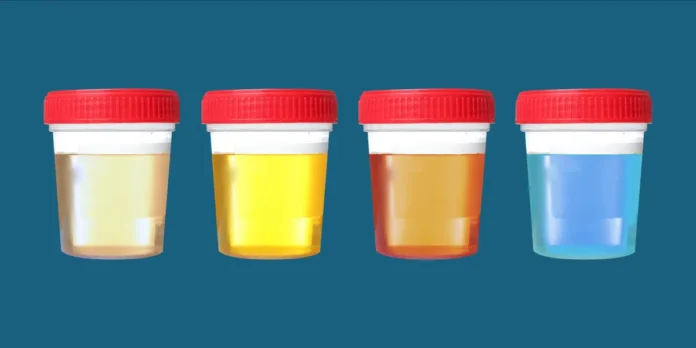You might not think twice about the color of your urine — but this simple daily signal can actually offer some gentle clues about your body’s inner balance.
While urine color itself doesn’t do anything for your health, it’s like a built-in health tracker you can check every day — no special equipment required. Think of it as your body’s way of communicating what it needs.
Here’s a friendly guide to what different urine colors might mean — and when you might want to make a small change or seek professional advice.
1. Clear or Very Pale Yellow
What it may indicate:
You’re likely well hydrated — or possibly drinking more water than necessary.
Wellness tip:
Hydration is great, but balance is key. Drinking too much water can sometimes flush out helpful minerals. Sip mindfully throughout the day and listen to your body.
2. Pale Yellow (The Ideal Shade)
What it may indicate:
This is considered the “sweet spot” for hydration. It suggests your body has just the right amount of fluid to function smoothly.
Why it matters:
Proper hydration supports energy levels, digestion, and kidney function. A pale yellow color usually means things are flowing just right.
3. Dark Yellow or Amber
What it may indicate:
You might be mildly dehydrated.
What to do:
Reach for a glass of water or herbal tea. This is often your body’s gentle nudge to drink more fluids throughout the day.
4. Honey or Light Brown
What it may indicate:
This could suggest more noticeable dehydration — or, in some cases, it might be connected to liver or bile function.
Wellness tip:
Start by hydrating well. If this color shows up often or doesn’t improve, it’s a good idea to check in with a healthcare provider.
5. Pink or Red
What it may indicate:
Sometimes this is due to colorful foods like beets or berries. But it could also signal that there’s blood in the urine.
When to be cautious:
If you haven’t eaten anything red or purple recently, and the color continues, it’s best to talk to a doctor — just to be safe.
6. Orange
What it may indicate:
This can be linked to certain supplements or medications, or simply dehydration. In some cases, it could point to liver or bile duct issues.
Self-care tip:
Try increasing your fluid intake. If the color stays the same for a few days, consider getting a professional opinion.
7. Blue or Green
What it may indicate:
This is rare, but it can happen due to food dyes, certain medications, or very specific health conditions.
Important note:
If you notice this and it’s not related to something you ate, it’s a good idea to ask a doctor to take a closer look.
8. Foamy or Bubbly Urine
What it may indicate:
Some occasional bubbles can be normal. But if your urine looks consistently foamy, it could suggest protein is present.
Gentle suggestion:
It’s worth mentioning to your doctor if this happens regularly, especially if you’re noticing other changes too.
Final Thoughts: Listen to Your Body’s Signals
Urine color might not seem like a big deal, but it’s one of the easiest ways to stay connected with your body’s needs.
Staying hydrated, eating nourishing foods, and paying attention to small changes can help you stay one step ahead of common imbalances. And remember — when something doesn’t feel right or seems unusual, it’s always okay to check in with a professional.
Curious about more simple ways to track your health naturally?
Let me know and I can share more wellness insights just like this — gentle, practical, and rooted in nature.
